Last updated on
Discover a variety of stunning grass alternatives perfectly suited for Michigan’s climate, transforming your landscape into an eco-friendly and low-maintenance haven.
If you’re a homeowner in Michigan, you know how important it is to maintain a lush green lawn. However, traditional grass lawns can be expensive and time-consuming to upkeep.
Luckily, there are plenty of alternatives to grass that can save you money and still provide the same beautiful aesthetic. In this article, we’ll explore some of the best grass alternatives Michigan has to offer so that you can have a stunning yard without breaking the bank!
Overview of Grass Alternatives

Grass alternatives are becoming increasingly popular among homeowners in Michigan. They offer a variety of benefits, including lower maintenance costs and reduced water usage.
Many grass alternatives require less fertilizer and pesticides than traditional lawns, making them an eco-friendly option for those who want to reduce their environmental impact.
There are several types of grass alternatives available that can be used in different areas of your yard depending on the amount of sunlight or shade they receive. Some options include native ground covers like creeping phlox or wild ginger which thrive in shady areas while low-maintenance turfgrasses such as fine fescue work well in sunny spots.
In this article, we’ll explore some common grass alternative options that you can use to create a beautiful landscape without relying solely on traditional lawn care methods.
Types of Grass Alternatives
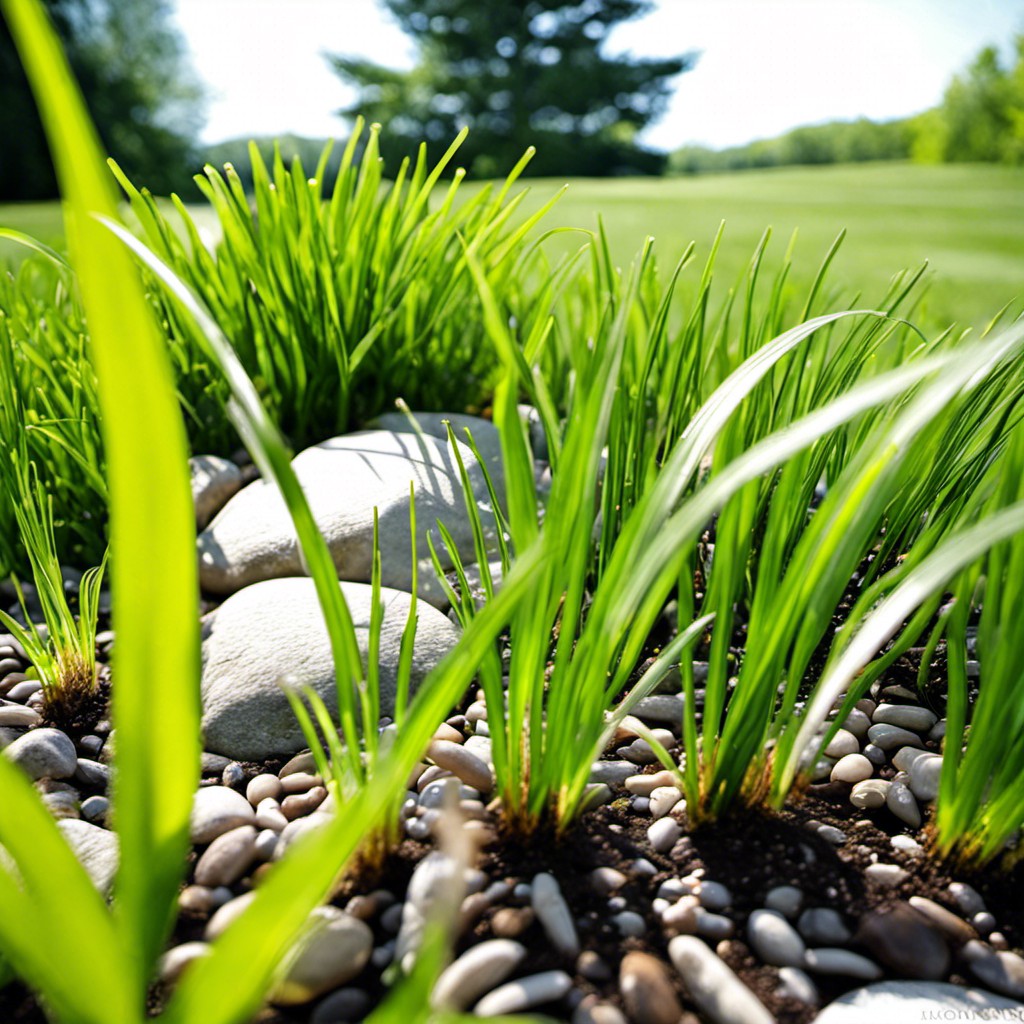
Some of the most popular types of grass alternatives include ground covers, low-maintenance turfgrasses, ornamental grasses, and wildflowers.
Ground covers such as creeping thyme or sedum are excellent choices for areas where traditional lawns struggle to grow. They require minimal maintenance and provide a beautiful carpet-like appearance.
Low-maintenance turfgrasses like fine fescue or buffalo grass have become increasingly popular in recent years due to their ability to thrive with little water or fertilizer. These varieties also tend not to grow very tall which means less mowing!
Ornamental Grass Alternatives offer unique textures and colors that add visual interest while still providing coverage similar to traditional lawn species.
Native wildflowers can be an excellent choice for those looking for a more natural look in their yard while supporting local ecosystems by attracting pollinators such as bees and butterflies.
Native Ground Covers in Michigan
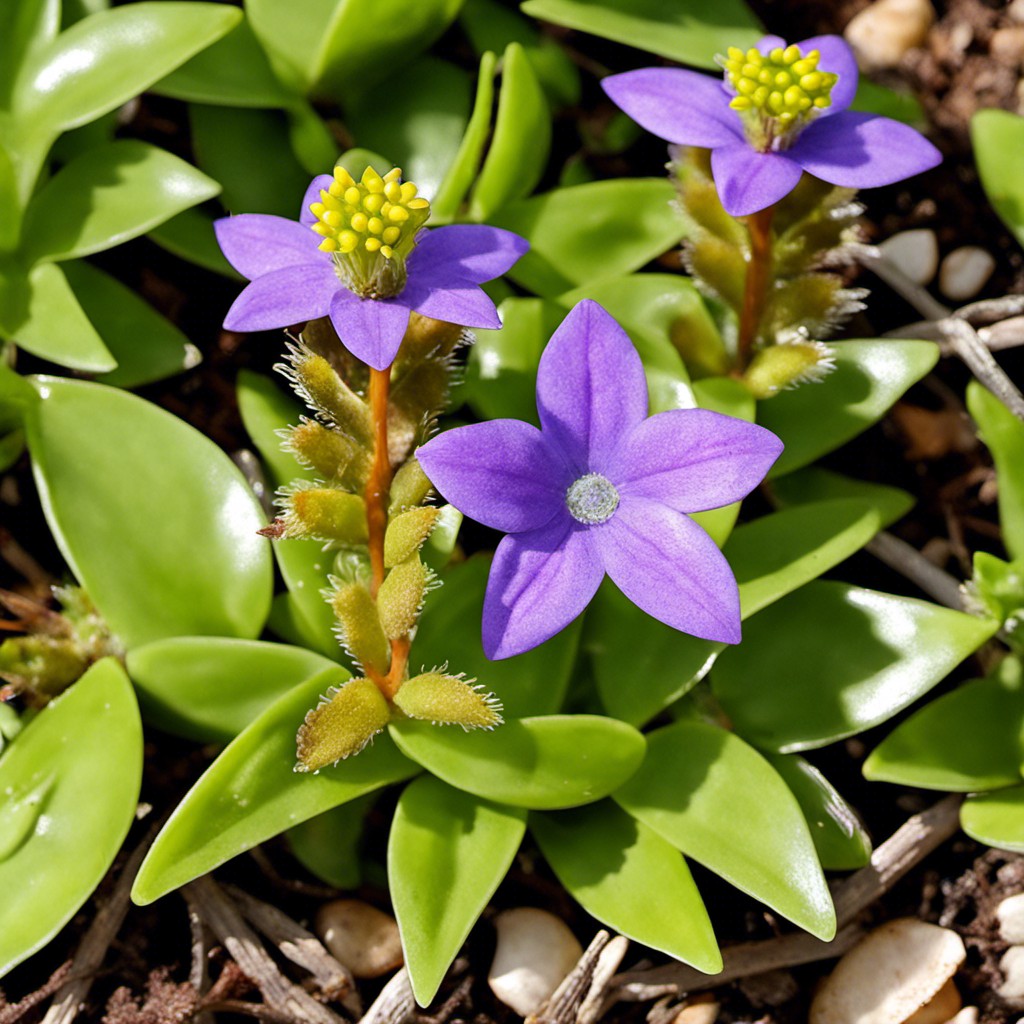
These plants are well adapted to Michigan’s climate, making them easy to care for and resistant to pests and diseases.
Some popular native ground cover options in Michigan include wild ginger, creeping phlox, woodland stonecrop, foamflower, and barren strawberry. These plants not only provide beautiful foliage but also attract pollinators such as bees and butterflies.
One of the benefits of using native ground covers is that they require less water than traditional grass lawns. This makes them ideal for areas with limited rainfall or where water conservation is a concern.
Another advantage of using native ground covers is that they help prevent soil erosion by holding the soil in place with their roots. They also improve soil health by adding organic matter as they decompose over time.
Low-Maintenance Turfgrasses

These varieties of grass require less water and fertilizer than traditional lawns, making them more eco-friendly and cost-effective in the long run.
Some popular low-maintenance turfgrass options include fine fescue, buffalo grass, and zoysia. Fine fescue is a cool-season variety that thrives in Michigan’s climate.
It has a soft texture and comes in several different shades of green.
Buffalo grass is another great choice for those seeking an easy-to-care-for lawn. This warm-season variety can withstand drought conditions well but may not be suitable for areas with heavy foot traffic due to its delicate nature.
Zoysia is also worth considering if you want to reduce your lawn maintenance workload significantly. This warm-season turfgrass grows slowly but forms dense mats once established which helps it choke out weeds naturally while requiring little mowing or watering compared to other types of lawns.
Drought-Tolerant Lawn Options
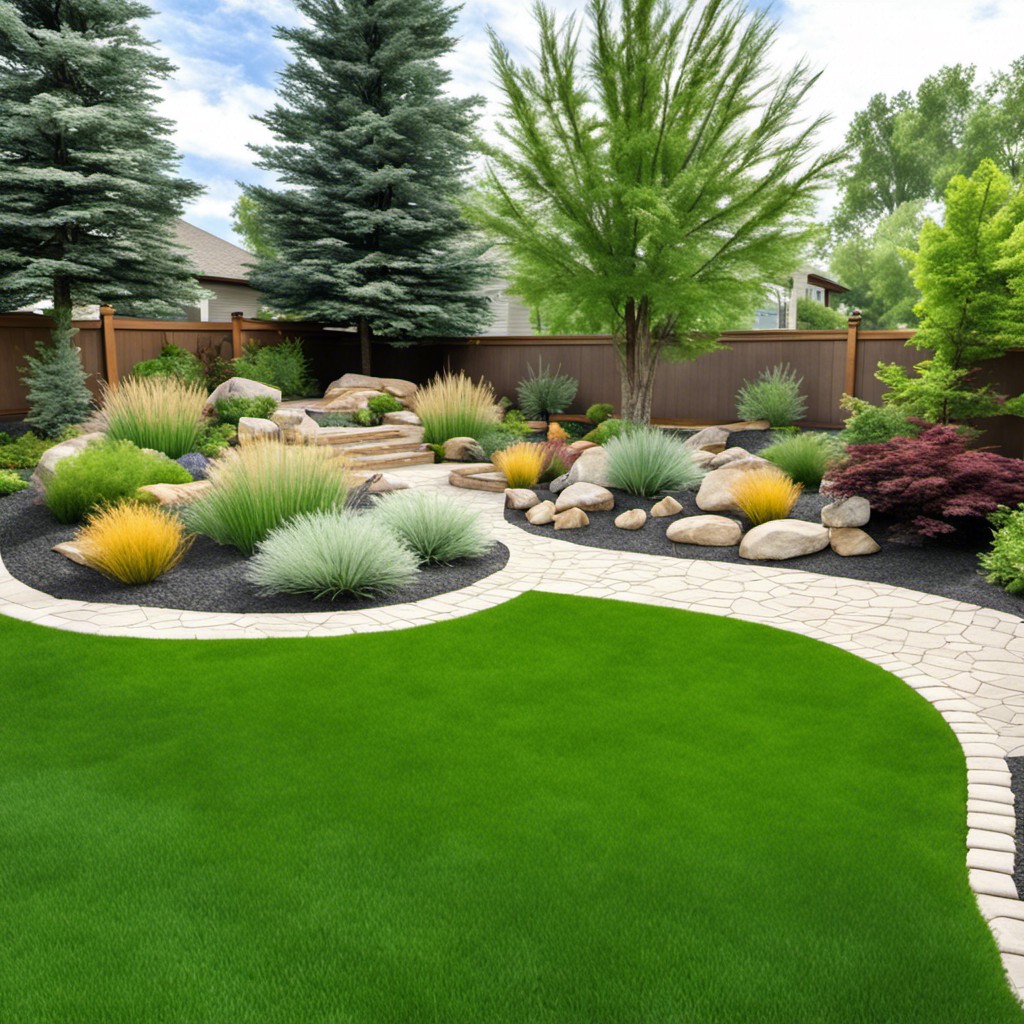
Fortunately, there are several drought-tolerant lawn options that require less water and maintenance than traditional lawns. One option is to replace your grass with clover or microclover.
Clover is a nitrogen-fixing plant that requires less watering than grass and stays green even in drought conditions.
Another option for a low-maintenance lawn is the use of ornamental grasses such as blue fescue or feather reedgrass which have deep roots systems allowing them to survive long periods without water.
If you’re looking for something more unique, consider planting thyme between pavers instead of using traditional turfgrass. Thyme has fragrant leaves when stepped on and releases oils into the air when mowed.
Shade-tolerant Grass Alternatives
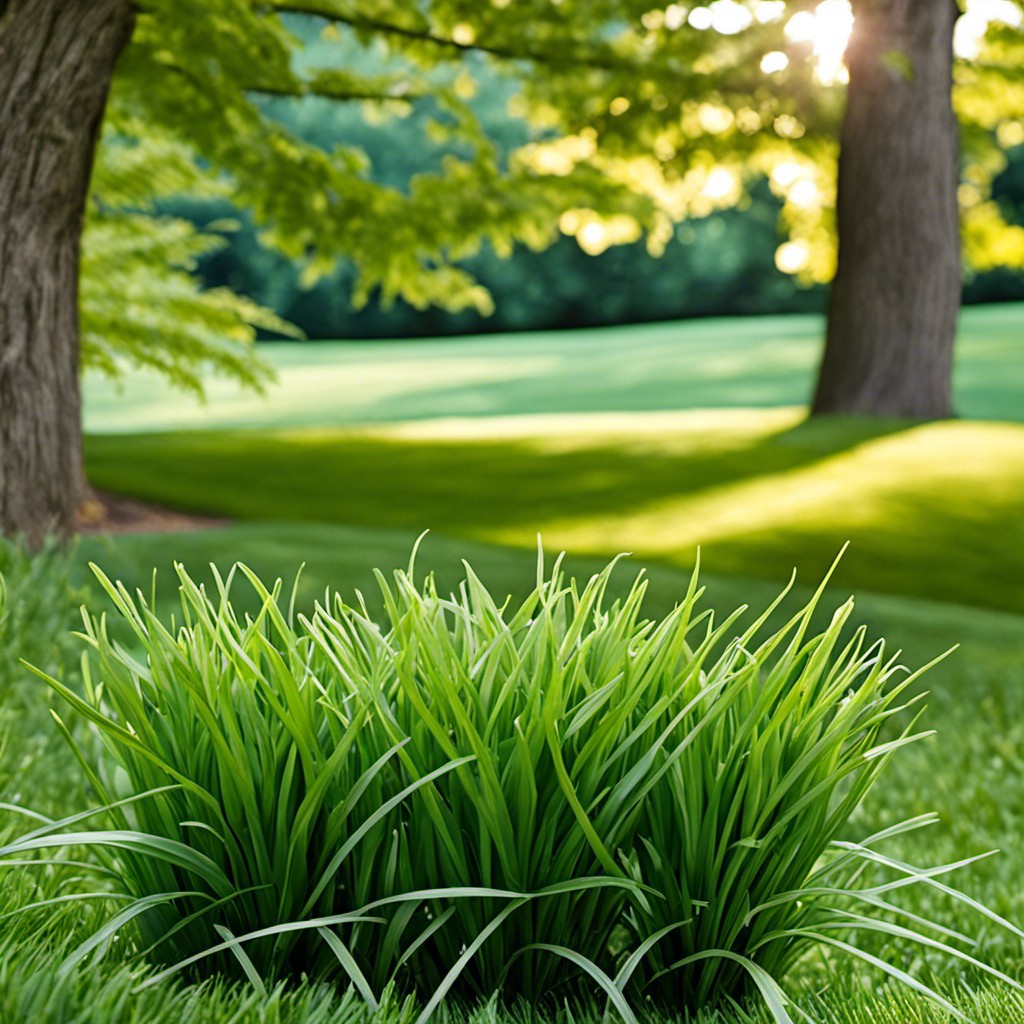
Fortunately, there are several options that thrive in low-light conditions and require minimal maintenance. One of the best shade-tolerant grass alternatives is moss.
Moss lawns are soft to walk on and provide an attractive green carpet-like appearance that requires no mowing or fertilizing.
Another option for shaded areas is creeping Jenny (Lysimachia nummularia). This ground cover has bright yellow-green leaves and produces small yellow flowers in summer.
It spreads quickly but can be easily contained with regular trimming.
For those who prefer a more traditional look, fine fescue blends offer excellent shade tolerance while still resembling a classic lawn appearance. Fine fescues come in various types such as chewings fescue, hard fescue or creeping red fescue which all tolerate partial sun to full shade conditions well.
Ornamental Grass Alternatives

However, many ornamental grasses can be invasive or require high maintenance. Fortunately, there are several alternatives that offer the same aesthetic appeal without the hassle.
One option is feather reed grass (Calamagrostis acutiflora), which has narrow green leaves and tall plumes of flowers in late summer. It’s a low-maintenance plant that prefers full sun but can tolerate some shade.
Another alternative is switchgrass (Panicum virgatum), which comes in various colors ranging from blue-green to deep reds and purples. Switchgrass requires little water once established, making it an excellent drought-tolerant option for Michigan summers.
Lastly, Japanese forest grass (Hakonechloa macra) offers a unique look with its bright green foliage that cascades like flowing water over rocks or other plants. This ornamental grass thrives in partial shade and moist soil conditions.
Eco-friendly Landscaping
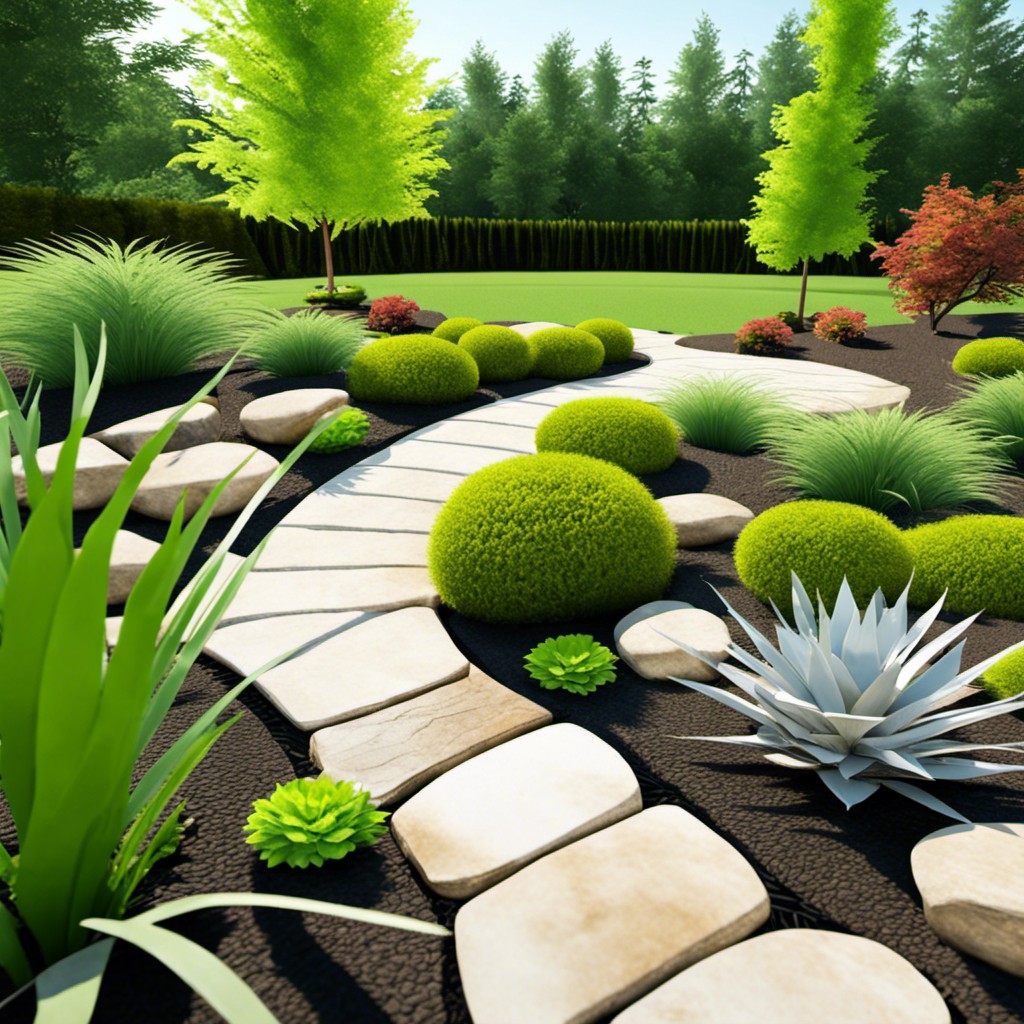
By using native plants, you can help support local ecosystems and reduce the need for fertilizers or pesticides. Incorporating rain gardens or permeable paving can help manage stormwater runoff and prevent erosion.
When choosing plants for your eco-friendly landscape, consider those that are adapted to Michigan’s climate. Native species like wildflowers, grasses, shrubs and trees require less water than non-native species because they have evolved to thrive in our unique environment.
Another important aspect of eco-friendly landscaping is soil health. Healthy soil supports plant growth by providing essential nutrients while also reducing the need for chemical fertilizers.
Composting yard waste such as leaves or grass clippings is an easy way to improve soil quality without spending money on expensive products.
Perennial Meadowscapes
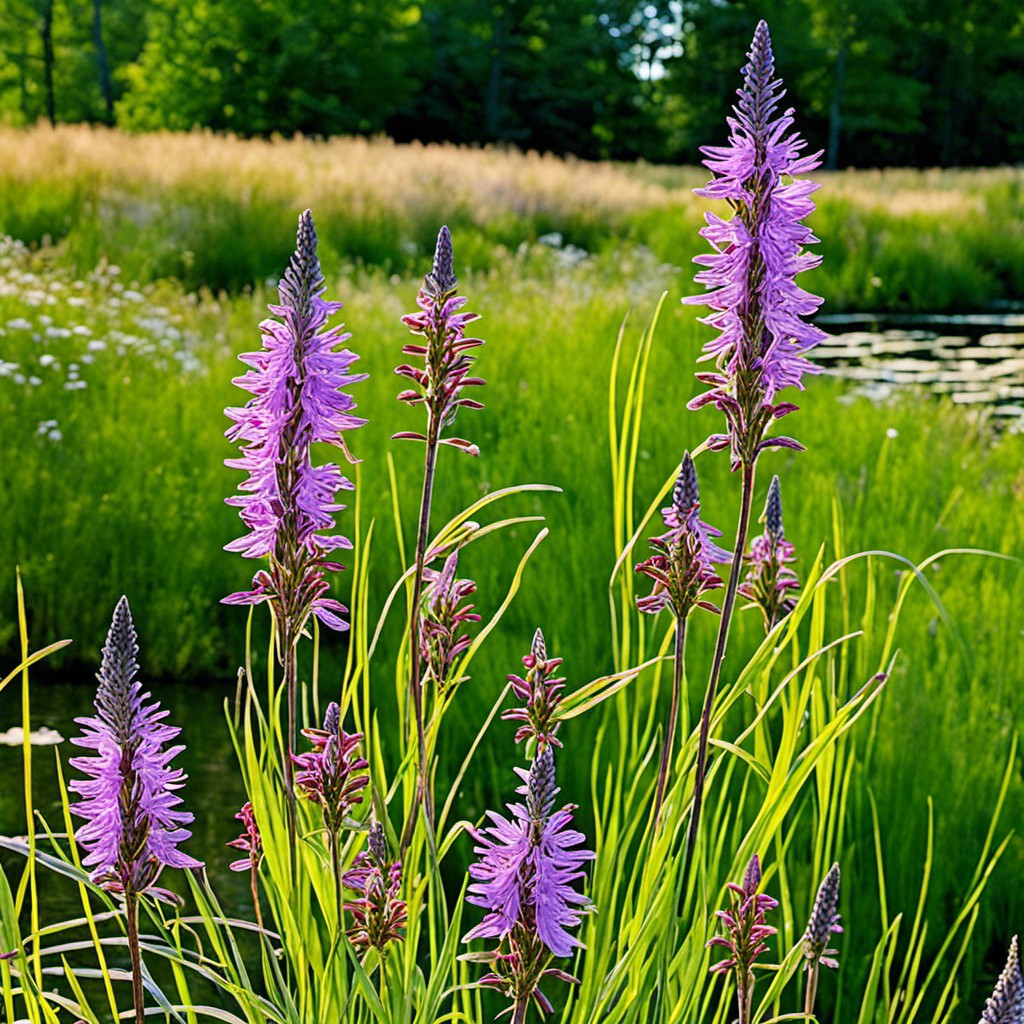
These landscapes consist of a mix of native wildflowers, ornamental grasses, and other perennials that grow naturally in Michigan’s climate. They require less water than traditional lawns and provide habitat for pollinators such as bees and butterflies.
To create a perennial meadowscape, start by selecting plants that are native to your area. This will ensure they can thrive in the local climate without requiring excessive watering or fertilization.
Some popular choices include black-eyed susans, coneflowers, milkweed, asters, switchgrass and little bluestem.
Once you have selected your plants it is important to prepare the soil properly before planting them. Remove any existing turfgrass or weeds from the area where you plan on creating your meadowscape using either hand tools or herbicides if necessary.
Next loosen up the soil with a tiller so that it is easier for plant roots to penetrate deep into it which helps improve drainage while also providing better access nutrients from below ground level. Finally add organic matter like composted leaves or manure which improves fertility levels within soils making sure not too much nitrogen-rich fertilizer is added since this can encourage weed growth instead of desired plant growth.
Native Wildflower Plantings
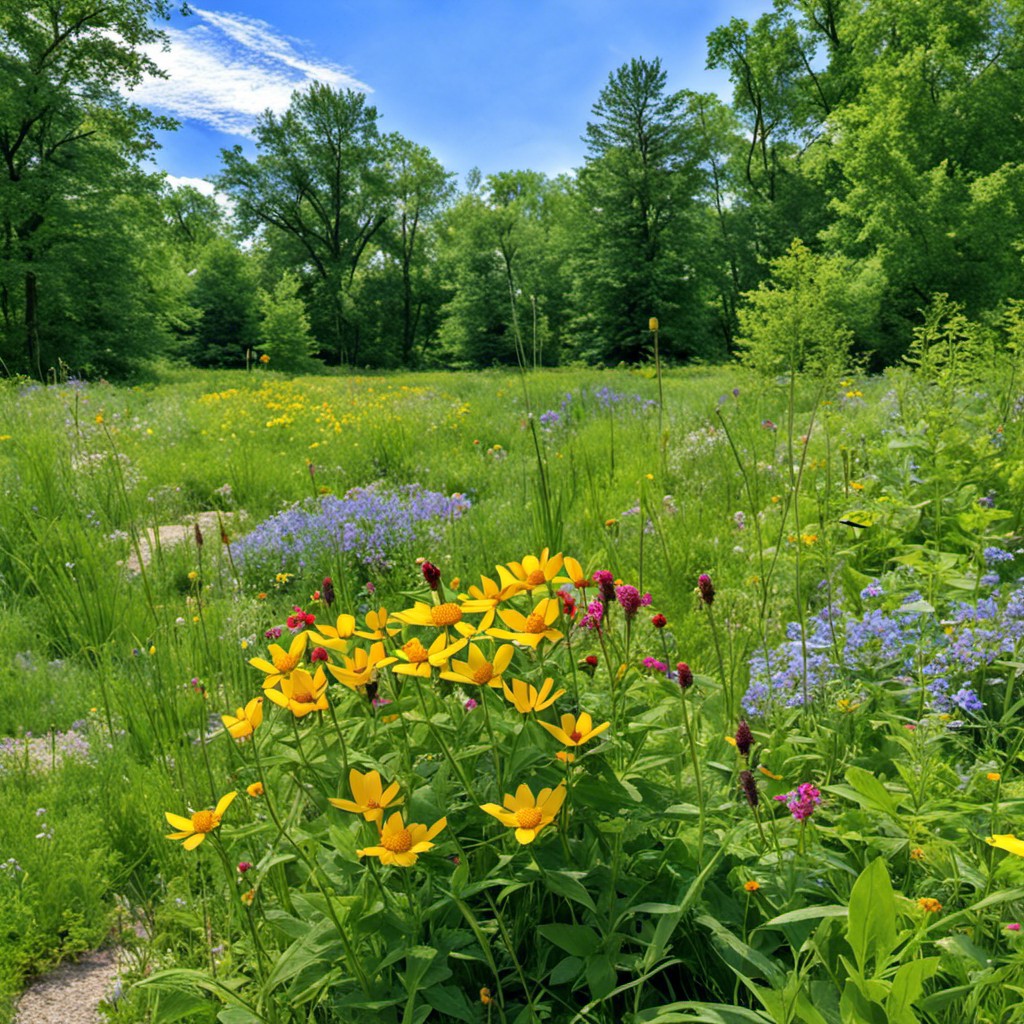
Not only do they require less maintenance than traditional lawns, but they also provide important habitat and food sources for pollinators like bees and butterflies.
Michigan has a wide variety of native wildflowers to choose from, including Black-eyed Susan, Purple Coneflower, Wild Bergamot (Bee Balm), Butterfly Weed (Milkweed), Goldenrod and many more. These plants are adapted to Michigan’s climate conditions which makes them low-maintenance options that can thrive in your yard without much effort on your part.
When planning your wildflower garden or meadowscape be sure to research the specific needs of each plant species before making any purchases. Some may prefer full sun while others will thrive in partial shade; some may need well-draining soil while others can tolerate wetter conditions.
Once established these plants will not only add beauty but also help support local ecosystems by providing habitats for birds as well as other wildlife such as rabbits or deer who feed on their leaves during winter months when other vegetation is scarce.
Rain Garden Design Ideas
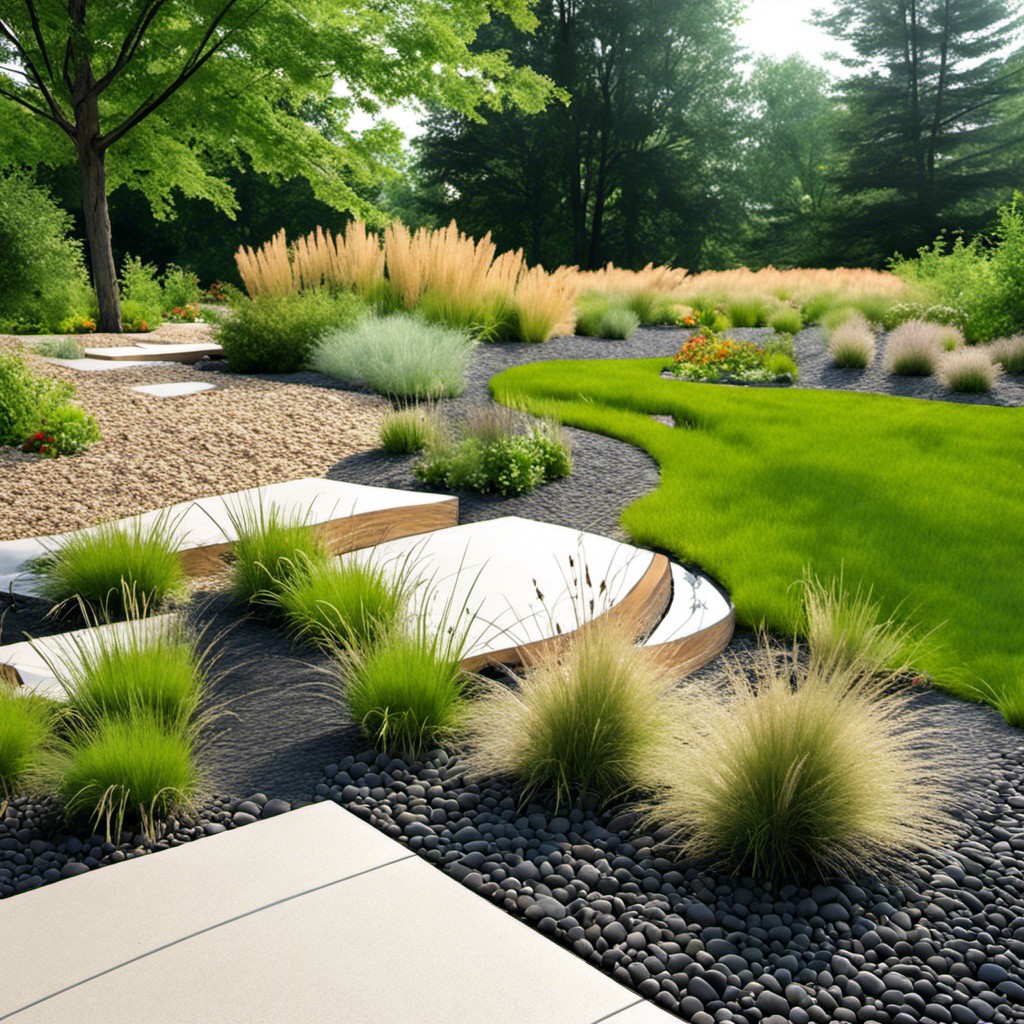
Rain gardens are designed to capture and filter stormwater runoff from your property, reducing erosion and pollution in nearby waterways. They also provide habitat for beneficial insects like butterflies and bees.
When designing your rain garden, it’s important to choose plants that can tolerate both wet conditions during heavy rainfall as well as dry periods between storms. Native plants such as Joe Pye weed (Eutrochium purpureum), cardinal flower (Lobelia cardinalis), swamp milkweed (Asclepias incarnata) or blue flag iris (Iris versicolor) are great options for Michigan’s climate.
To create an effective rain garden, choose a low-lying area of your yard where water naturally collects after rainfall. Dig out the area to create a shallow depression with sloping sides leading towards the center of the basin where you will plant vegetation.
Once planted, mulch around each plant with organic matter such as shredded leaves or wood chips which will help retain moisture in dry periods while suppressing weeds at the same time.
Pollinator-friendly Landscaping

By planting native flowers, shrubs, and trees that provide nectar and pollen for bees, butterflies, hummingbirds, and other pollinators you can help maintain the delicate balance of our ecosystem.
Michigan has over 400 species of native bees alone! These important insects play an essential role in pollinating crops like apples cherries blueberries cucumbers squash pumpkins melons raspberries strawberries tomatoes peppers eggplants beans peas alfalfa clover sunflowers soybeans cotton flax etc. Without them we would lose many of our favorite foods!
To attract these beneficial creatures to your garden consider adding plants such as milkweed coneflower bee balm goldenrod aster black-eyed Susan butterfly weed Joe-Pye weed phlox salvia sedum yarrow or any other Michigan-native flowering plant.
Xeriscaping in Michigan

This method has become increasingly popular in Michigan due to the state’s unpredictable weather patterns, which can result in periods of drought or excessive rainfall. By implementing xeriscaping techniques, homeowners can reduce their water bills while still maintaining a beautiful landscape.
When it comes to xeriscaping in Michigan, there are several factors to consider. First and foremost is plant selection – choosing native species that are adapted to the local climate will ensure they thrive with minimal watering requirements.
Some great options for Michigan include prairie dropseed grasses, butterfly weed flowers, and black-eyed Susan wildflowers.
Another important aspect of xeriscaping is soil preparation – ensuring proper drainage will prevent excess moisture from accumulating around plant roots during heavy rainfalls or snow melts. Incorporating organic matter into the soil can improve its ability to retain moisture during dry spells.
Maintenance practices such as mulching and regular weeding help conserve moisture by reducing evaporation rates while also preventing competition between plants for limited resources like sunlight and nutrients.
Controlling Invasive Species
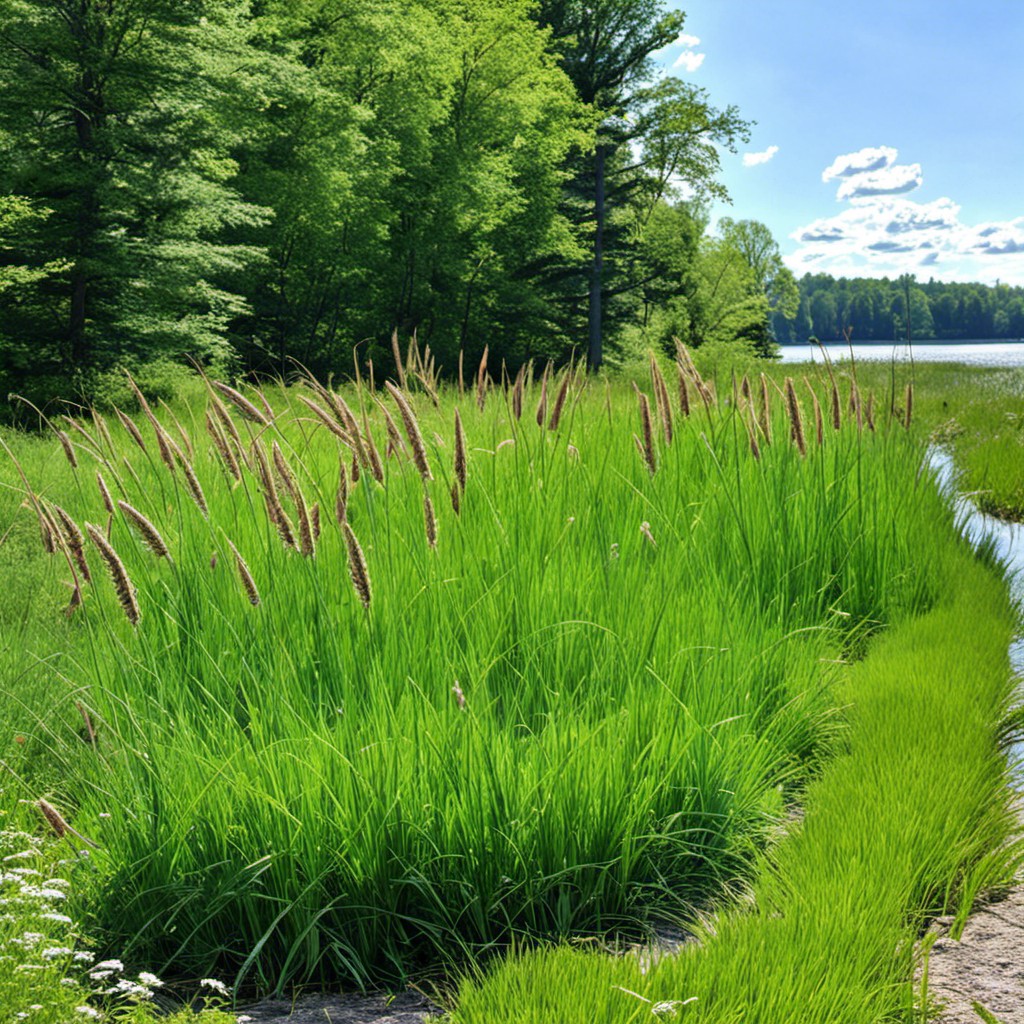
Invasive plants can quickly take over and outcompete native species, disrupting the natural balance of your yard’s ecosystem. Fortunately, there are several ways to control invasive plant growth without resorting to harmful chemicals.
One effective method is manual removal, which involves physically pulling or digging up the offending plants by their roots. This approach works best for small infestations or individual plants but may not be practical for larger areas.
Another option is using mulch or ground covers to smother invasive plant growth and prevent new seeds from germinating. However, it’s important to choose non-invasive options that won’t create new problems down the line.
Introducing native plant species can help restore balance in your yard’s ecosystem while also providing food and habitat for local wildlife.
Seasonal Plant Choices
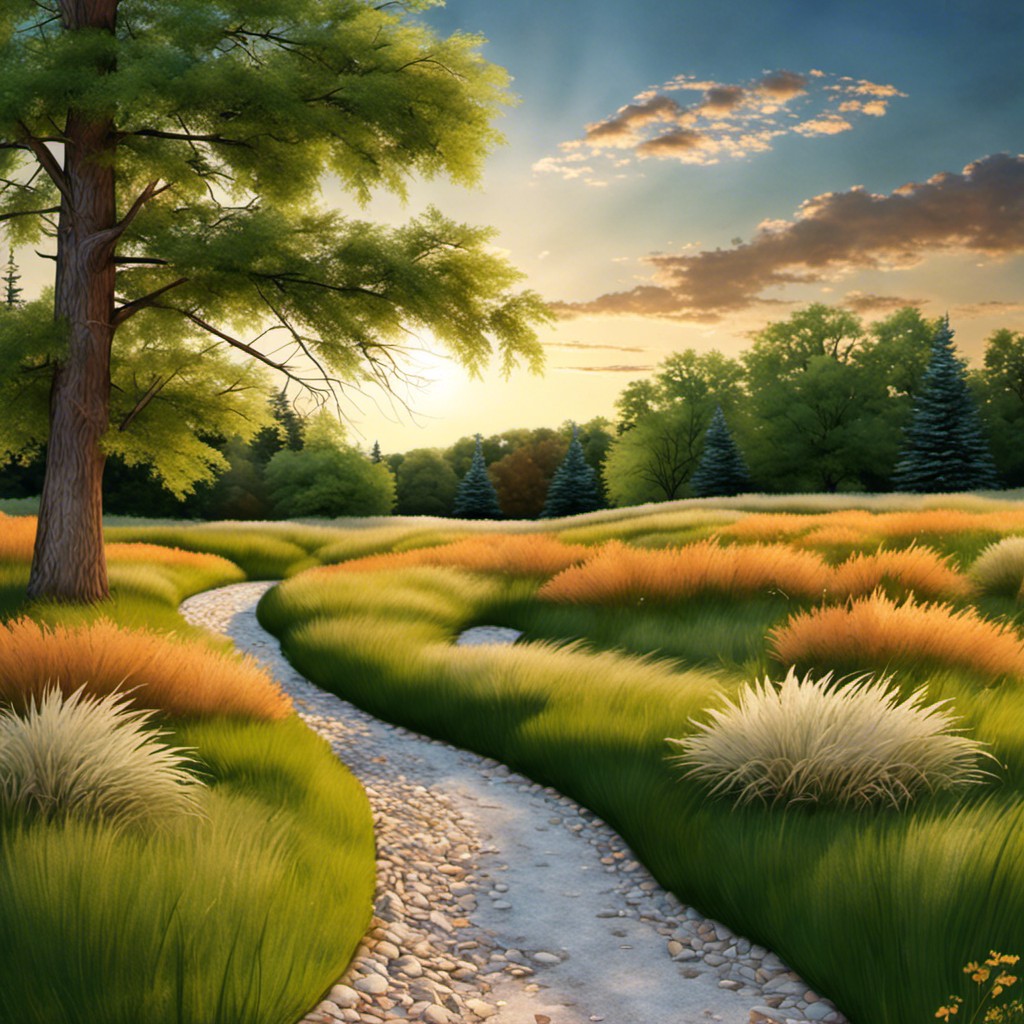
Certain plants may thrive during one season but struggle in another. That’s why selecting a variety of plants that can withstand Michigan’s climate is crucial.
For example, if you’re looking for a ground cover option, creeping phlox is an excellent choice as it blooms in early spring and provides vibrant color throughout the summer months. Another great option is sedum which thrives in hot and dry conditions making them perfect for late summer or fall planting.
If you’re interested in adding some height to your garden beds or borders, ornamental grasses like switchgrass are ideal choices as they provide texture and movement while also being drought-tolerant.
Optimal Soil Preparation

Optimal soil preparation ensures that your plants have the best chance of thriving in their new environment. The first step is to remove any existing grass or weeds from the area where you plan on planting.
You can use a shovel or sod cutter for this task.
Once you’ve cleared out all unwanted vegetation, it’s time to test your soil pH levels and nutrient content using a home testing kit or by sending samples off to a lab for analysis. This information will help determine what amendments are necessary before planting.
Michigan soils tend towards being acidic due to high rainfall and organic matter decomposition rates; therefore, adding lime may be necessary if your pH level is too low (below 6). On the other hand, if your pH level is too high (above 7), sulfur may be needed instead.
In addition to adjusting pH levels with lime or sulfur applications as needed, incorporating organic matter such as compost into Michigan soils can improve drainage while also providing nutrients that promote healthy plant growth over time.
Soil Health and Fertility
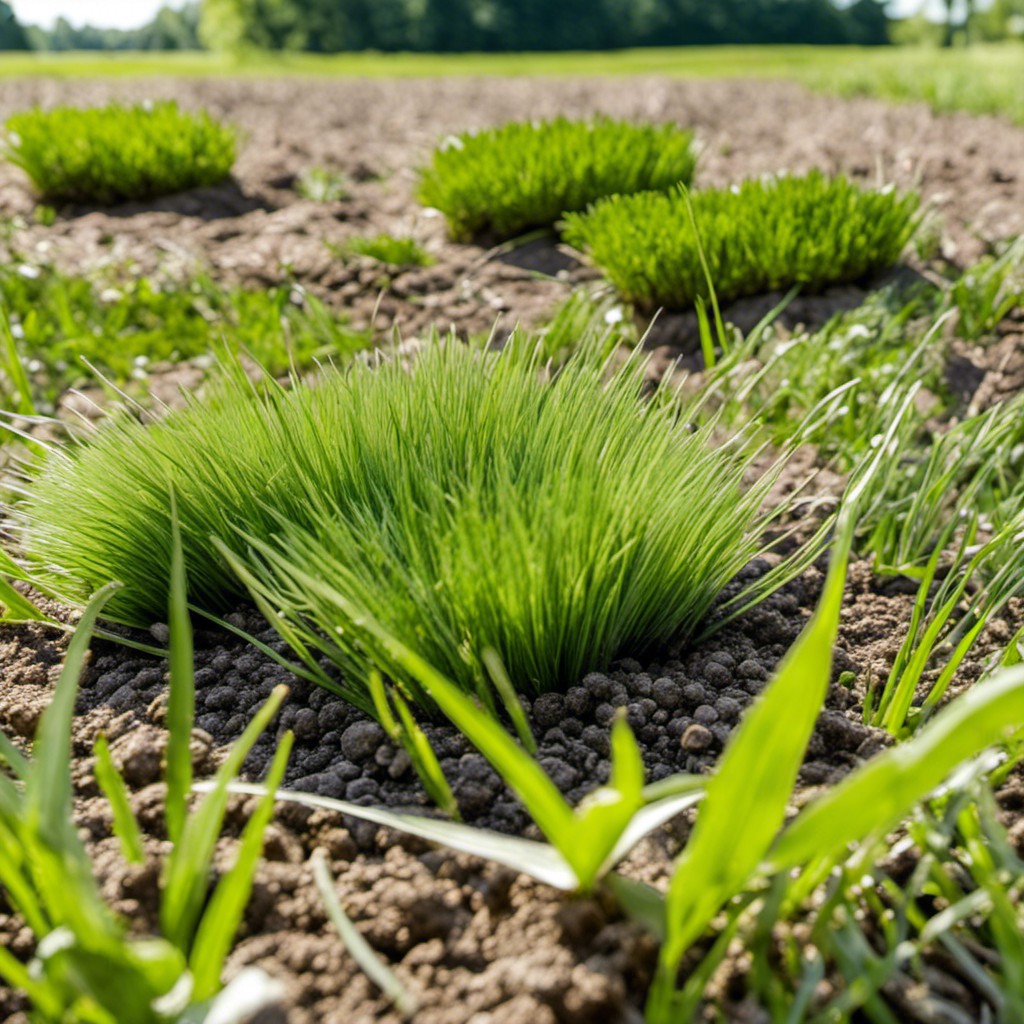
Different plants have different soil requirements, so it’s important to choose the right alternative that will thrive in your specific soil conditions. Before planting any new vegetation, it’s essential to test the pH level of your soil and amend it accordingly.
Adding organic matter such as compost or aged manure can improve both the structure and nutrient content of your soil. This is especially important if you’re planning on using low-maintenance turfgrasses or native ground covers that require less fertilizer than traditional grasses.
In addition to amending the soil before planting, regular maintenance practices like mulching with leaves or straw can help retain moisture in dry periods while also adding nutrients back into the earth as they decompose over time.
Integrated Pest Management
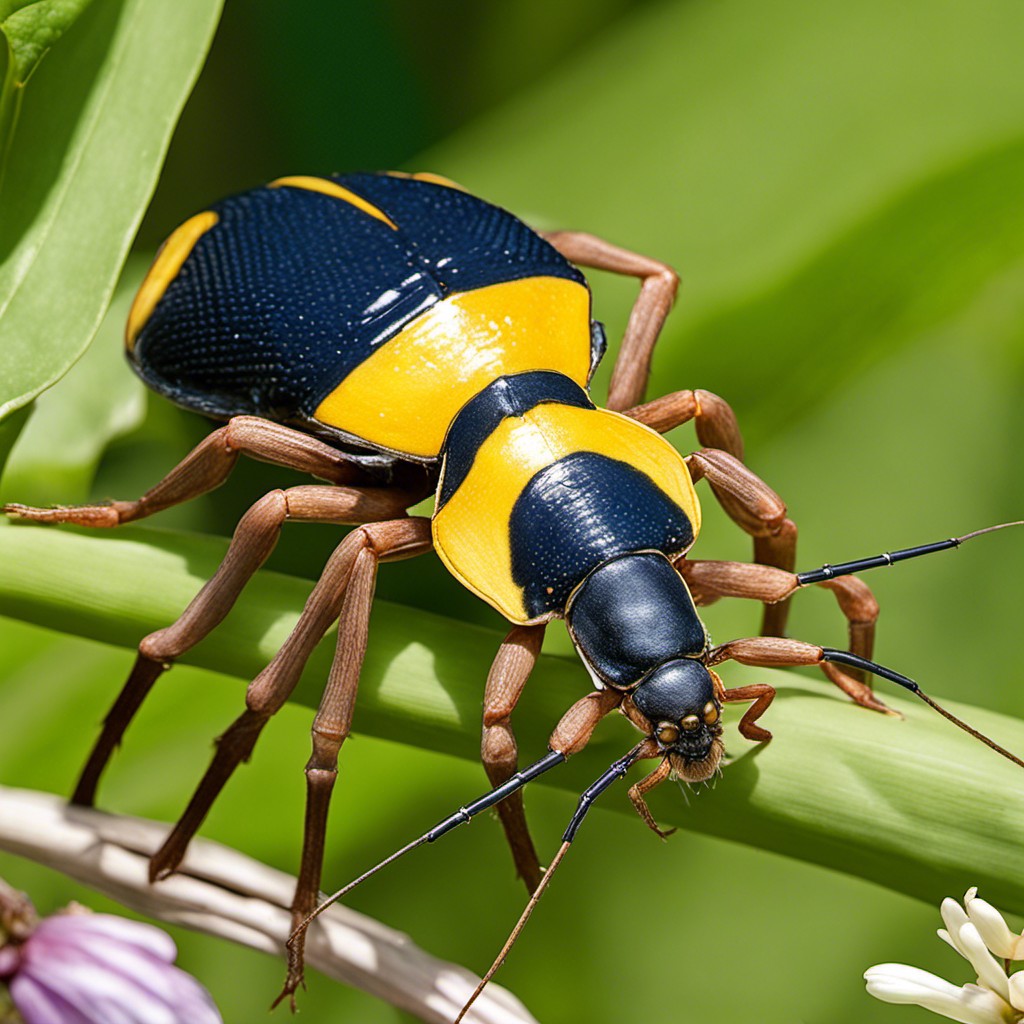
By using IPM, you can reduce your reliance on harmful pesticides and create a healthier environment for both humans and wildlife.
In Michigan, there are many pests that can damage your lawn or garden. Some common examples include Japanese beetles, grubs, aphids, and spider mites.
Rather than reaching for chemical sprays at the first sign of trouble, consider implementing some IPM strategies.
One effective method is to encourage beneficial insects like ladybugs or lacewings into your yard by planting flowers they love such as dill or yarrow. You could also try companion planting – growing certain plants together that naturally repel pests from one another.
Another key aspect of IPM is monitoring pest populations closely so you can catch problems early before they become severe infestations requiring drastic measures.
Installation and Maintenance Tips
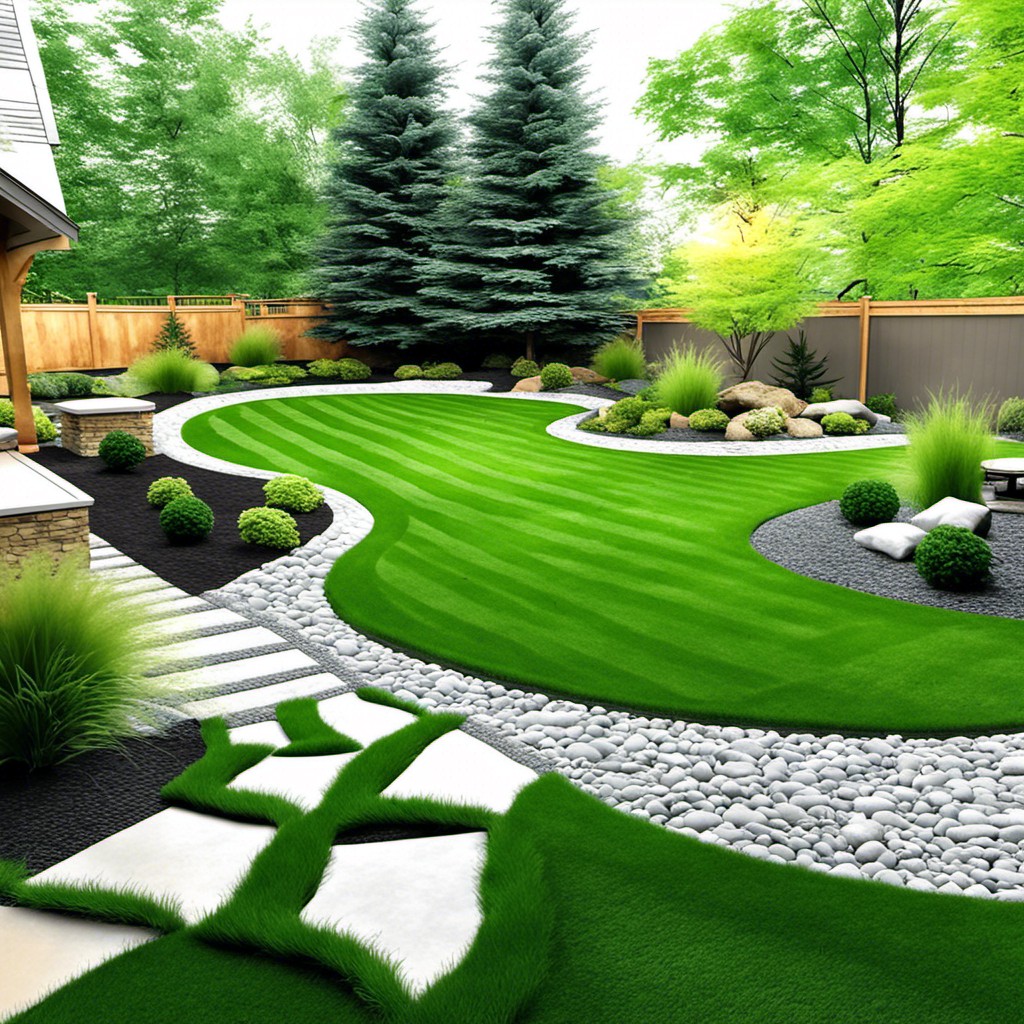
While many of these options require less upkeep than traditional grass lawns, they still need some care to thrive.
When installing any type of ground cover or turfgrass, proper soil preparation is key. Make sure the area is cleared of debris and weeds before laying down any new material.
If necessary, amend the soil with compost or other organic matter to improve drainage and fertility.
Maintenance requirements will vary depending on which option you choose but generally involve regular watering during dry spells and occasional fertilization as needed. Some alternatives may also require periodic mowing or trimming to keep them looking neat.
It’s important not only to maintain your lawn alternative but also consider its impact on local ecosystems by avoiding chemical pesticides that can harm beneficial insects like bees and butterflies.
Climate Adaptation Practices
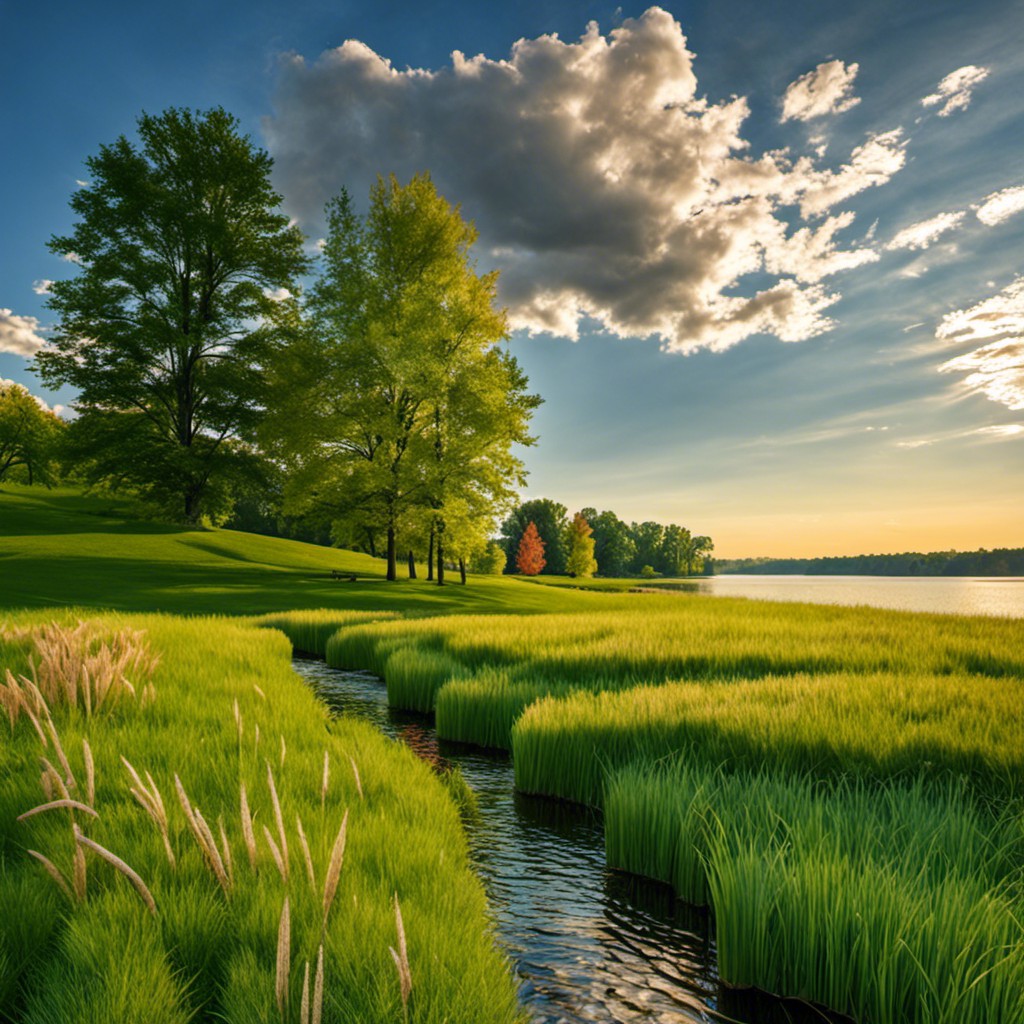
With the changing climate patterns and extreme weather events becoming more frequent, it’s crucial to select plants that can withstand these conditions.
One way to adapt is by selecting drought-tolerant plants that require less water during dry spells. Another option is planting species native to Michigan as they are better adapted to local weather patterns and soil types.
Incorporating rain gardens into your landscape design can help manage stormwater runoff while providing habitat for beneficial insects and birds. Xeriscaping techniques such as mulching or using permeable pavers also aid in reducing water usage while maintaining an attractive outdoor space.
By implementing these climate adaptation practices into your landscaping plans, you not only create a beautiful yard but also contribute towards building resilient communities in the face of changing environmental conditions.
FAQ
Is Dutch clover native to Michigan?
No, Dutch clover (Trifolium repens) is not native to Michigan, as it originates from Europe and central Asia.
What grass is native to Michigan?
Some native grasses in Michigan are big bluestem, little bluestem, Indian grass, switchgrass, Canada wild rye, and Virginia wild rye.
Is buffalo grass native to Michigan?
No, buffalo grass is not native to Michigan, as it is native to the high plains west of Chicago.
What are the benefits of using native grass alternatives in Michigan?
Native grass alternatives in Michigan offer benefits such as reduced water usage, decreased erosion, support for local ecosystems and wildlife, and improved soil health.
How do native Michigan grasses contribute to local ecosystems?
Native Michigan grasses contribute to local ecosystems by providing habitats, soil stabilization, and promoting water infiltration, thus supporting diverse wildlife and promoting environmental health.
What are the best ground cover plants for replacing traditional lawns in Michigan?
In Michigan, the best ground cover plants for replacing traditional lawns include Creeping Thyme, Clover, Moss, and Sweet Woodruff.
Recap





